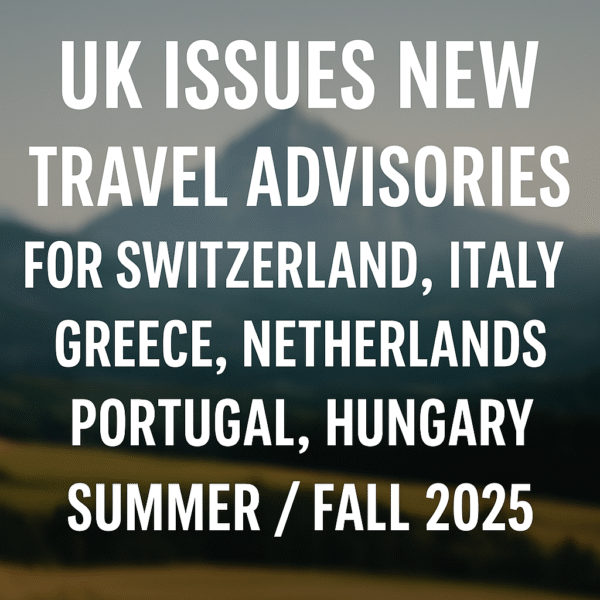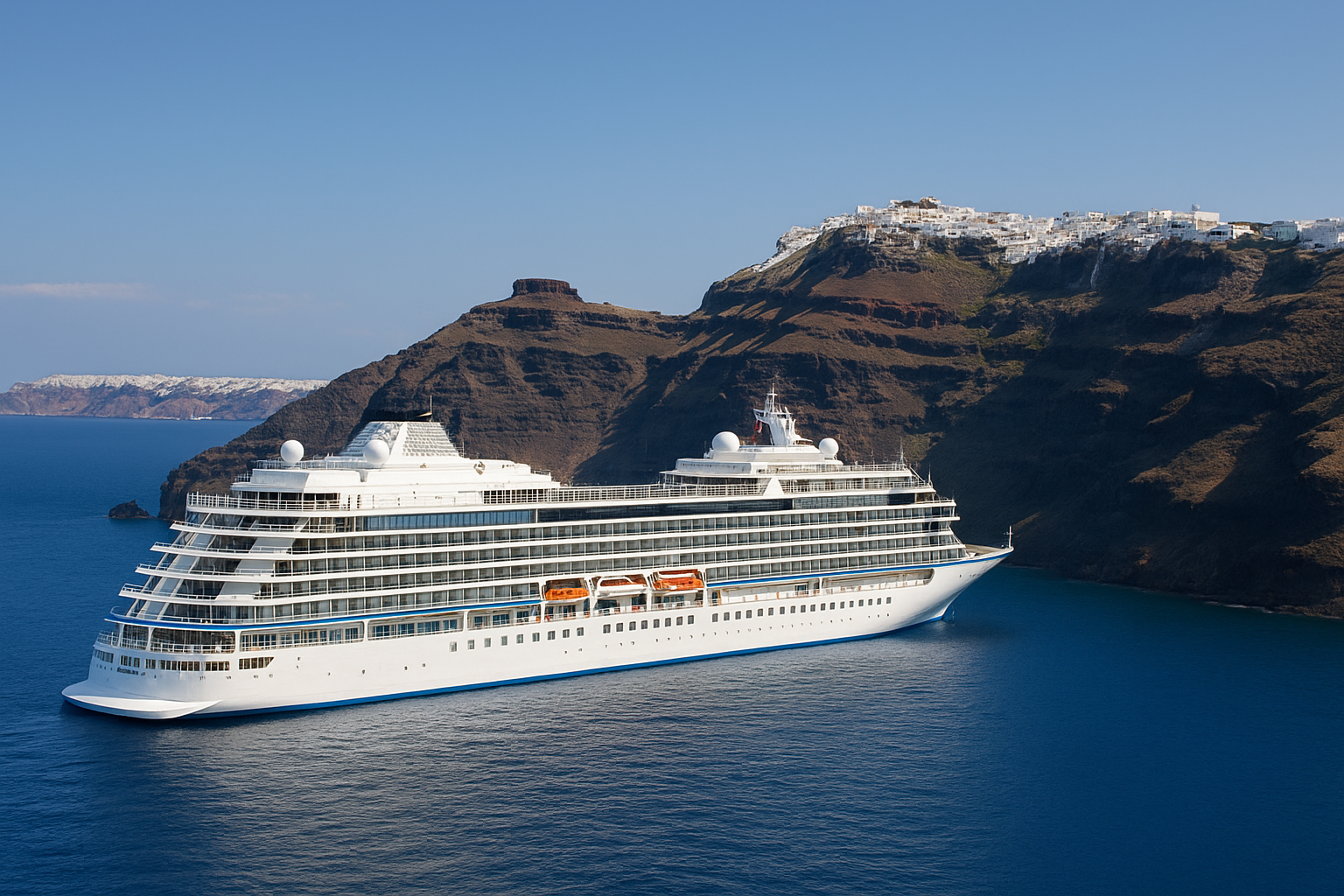Greece has enacted a landmark tourism reform by implementing a new seasonal cruise passenger tax for its most visited islands—Mykonos and Santorini. Effective from July 1, this structured levy ranges from €4 to €20 per passenger and aims to address overtourism, strengthen island infrastructure, and promote sustainable tourism practices.
This dynamic pricing model is the centerpiece of Greece’s wider strategy to balance the economic benefits of cruise tourism with the urgent need to safeguard natural and cultural resources in its most vulnerable destinations.
Seasonal Pricing to Protect Island Communities
The new cruise tax applies to cruise passengers disembarking in Mykonos or Santorini, with rates varying according to the season:
- June 1 to September 30 (Peak Season): €20 per person
- October 1 to October 31 (Shoulder Season): €12 per person
- November 1 to March 31 (Off-Peak Season): €4 per person
For ports outside Mykonos and Santorini, the tax is significantly lower, ranging from €1 to €5 depending on the season. This tiered structure is designed to distribute tourism more evenly across the country and minimize pressure on highly saturated destinations.
A Sustainable Response to Overtourism
Santorini and Mykonos collectively attract over 1.5 million cruise passengers annually, often overwhelming narrow streets, municipal services, and natural resources. The influx of day-trippers from large cruise ships has strained water supplies, waste management systems, and emergency services while providing limited financial benefit to local businesses.
Greece’s new cruise tax is a direct response to these challenges. Revenue generated will be reinvested in upgrading port facilities, bolstering waste and water systems, and supporting environmental conservation initiatives. According to the Greek Ministry of Tourism, this model ensures that cruise tourism contributes meaningfully to the economic and environmental wellbeing of local communities.
Greece as a Regional Leader in Sustainable Travel
With similar overtourism pressures across the Mediterranean, Greece’s innovative policy may serve as a regional model. Cities like Venice and Barcelona have implemented visitor levies, but Greece’s differentiated, seasonal tax approach provides a more flexible framework. This adaptive structure encourages cruise operators to shift schedules to less congested times while motivating travelers to explore lesser-known destinations.
Tourism Minister Olga Kefalogianni emphasized that, “Our goal is not to reduce tourism but to manage it wisely. This tax reflects our long-term vision of preserving our heritage and supporting islanders.”
Industry Reactions and Economic Outlook
Local authorities in Mykonos and Santorini have welcomed the measure, citing years of infrastructural burden caused by cruise overcrowding. While some cruise operators have expressed concern about potential itinerary changes, tourism experts argue that sustainable policies are increasingly essential for future growth.
Dr. Yannis Tsirikos, a tourism economist at the University of the Aegean, noted, “The shift from mass tourism to value-driven tourism is inevitable. Greece’s cruise tax is not a deterrent but a signal of quality and responsibility.”
Part of a Broader National Strategy
The cruise passenger fee is one facet of Greece’s National Strategy for Sustainable Tourism. Other key components include:
- Investments in renewable energy for tourism-related infrastructure
- Stricter environmental licensing for tour operators
- Expansion of off-season tourism, supported by targeted marketing campaigns
- Digitalization of tourism services to track and manage tourist flows
This multipronged approach aims to reduce seasonal pressure, protect ecological assets, and spread tourism’s economic benefits across regions.
Looking Ahead
As Greece positions itself as a leader in sustainable travel, the cruise tax initiative underscores the shift from high-volume tourism to meaningful, responsible visitor engagement. Santorini and Mykonos will remain premier destinations, but their futures will now be shaped by policies that value longevity, equity, and environmental balance.
By making cruise passengers contributors to the islands they visit—not just consumers—Greece is paving the way for a new era in Mediterranean tourism, one that honors both the beauty of its landscapes and the livelihoods of its people.
Conclusion
The introduction of a seasonal cruise passenger tax in Mykonos and Santorini marks a transformative step in Greece’s journey toward sustainable tourism. By balancing the needs of travelers, locals, and the environment, Greece is crafting a future where tourism thrives without compromising its treasures. As global travel resumes with greater awareness and purpose, Greece’s forward-thinking policies may well become the blueprint for destinations worldwide.
















